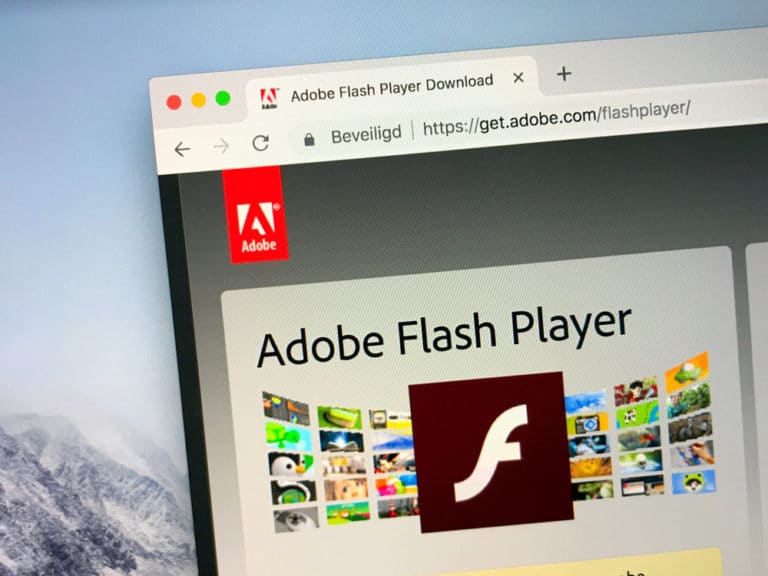After more than 20 years Adobe has officially pulled the plug on Adobe Flash. With this, the end has come for the software that has long been used for all kinds of animated content on the internet.
For many years, Flash was the main to show animations, videos and games on web pages. FutureWave developed the software in the 1990s for displaying vector-based animations on the internet. FutureWave was swiftly acquired by Macromedia.
Widespread use
Because at the time, HTML and CSS were still limited in their possibilities, Flash quickly gained popularity with web designers who wanted to show more than just static information on their web pages.
In 2005 Adobe acquired Macromedia and renamed Macromedia Flash to Adobe Flash. In the meantime, Flash enjoyed unprecedented popularity. Many websites were built entirely out of Flash elements. When Flash was not installed or enabled, browsers would only show a blank page with a request to enable Flash.
Decline
Nevertheless, towards the end of the 00s, it became clear that Flash would not be around forever. Many of the features in Flash became available in HTML, like displaying interactive and animated objects. By 2014, when HTML5 had become the standard, there were few reasons left to use Flash.
Another deathblow for Flash was the transition from desktop computers to mobile devices such as tablets and smartphones. In 2007 Steve Jobs announced the iPhone, which became the template for the modern smartphone. This phone ran a mobile version of the Safari browser, but it could not display Flash content. This forced many developers to modify their websites if they wanted to make them usable on iOS devices.
Steve Jobs cited the many security problems in Flash as one reason for not supporting the plug-in. Security holes were indeed a persistent problem. New problems in Flash were constantly found, and Adobe had to work hard to mitigate them.
The combination of the many security holes, the rise of HTML5 and the declining use of the software were enough reasons for Adobe to pull the plug on the project. In 2017 Adobe, together with Apple, Google, Microsoft, Mozilla and Facebook, announced that Flash would be phased out.
Starting 31 December 2020, Flash will officially have an EOL status. The software will continue to work for another two weeks before Flash content is actively blocked beginning on 12 January 2021. Users who still have Flash on their computer will receive clear warnings that the software will soon stop working.
Archives
Even though Flash has fallen completely out of favour, an important piece of the history of the internet risks being lost when it is finally shut down. Especially in the early ’00s, a large community was involved in creating animations and games that ran on Flash.
Fortunately, several projects were set up to preserve this history wherever possible. For example, the Internet Archive uses the Flash emulator Ruffle to run archived Flash games and videos in browsers. There are also several projects to convert Flash content to HTML5.
